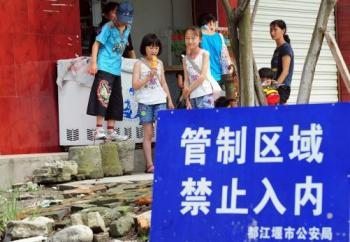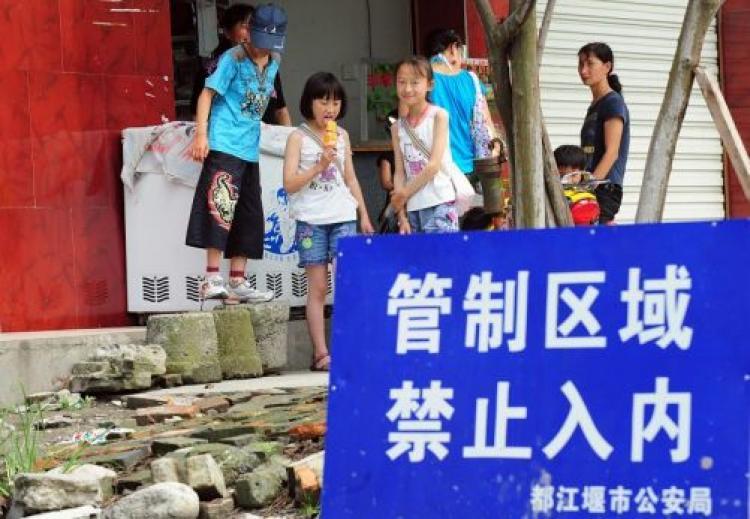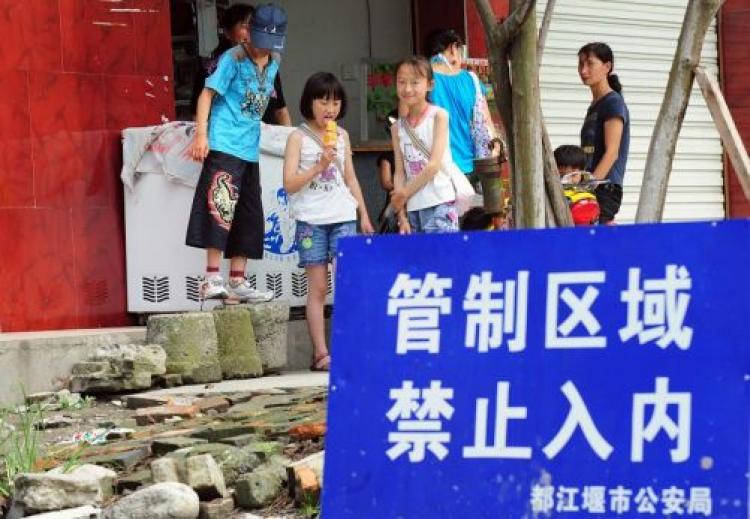Authorities Hid School Casualties
On Sept. 1, Premier Wen Jiabao attended the opening ceremony of the temporary site of Beichuan Middle School, one of hardest hit schools by the May 12 earthquake. According to the regime’s state run media, this is Wen’s fourth visit to Beichuan Middle School but the exact school casualties due to the earthquake were not mentioned. There were originally 47 classes at the school, with 2793 students and 197 staff members. With more than 50 students a class on average, it was learned that only one or two students survived the earthquake in some classes.On an Aug. 31 news release, the 44th by local Sichuan authorities about the Wenchuan earthquake, the Director of the Sichuan Provincial Office of Education, Tu Wentao, reported that 4,675 schools were damaged, and 3,339 schools require reconstruction in the hardest hit areas. In Sichuan Province, a total of 13,768 schools were damaged and 11,687 schools are in need of reconstruction, but no earthquake school casualties were mentioned.
School Zone Charges Tuition Despite State Policies
On Sept. 1, Chinese authorities also cancelled the tuition and fees for the nation nine-year compulsory education act that was already in effect for the rural region. An estimated 25,900 urban schools and 28.21 million students should benefit from this move. This means that the Chinese government would fulfill Wen Jiabao’s call for building a “free compulsory education both rural and urban”.However the same day, the Epoch Times learned from a reader’s letter saying, “Premier Wen visited Mianzhu at around 3 p.m. today. What he did not know is that the Mianzhu Middle School is still charging a tuition fee of 1,100 yuan. Nanxuan Middle School is charging between 550 to 1,100 yuan per student. If the parents rejected this, they would be told to go home and say that no registration is granted without fee.”
Aftermath
According to numerous overseas media reports, a number of earthquake experts have warned the Chinese regime about the earthquake and its geographical locations. The authority hid the forecast to maintain so-called “Pre-Olympic stability.” During the rescue, the Chinese military’s efficiency and their competence were seriously criticized. Many victims died because the regime refused foreign rescue teams during the prime rescue time which is the first 72 hours after the earthquake. The May 12 earthquake claimed more than 69,000 people with nearly 18,000 still missing.
It was also learned that many relief funds went into personal accounts. For instance, Mianzhu City People’s Hospital acquired $25 million for reconstruction. The money went into the contractor’s personal account before the construction team arrived. The money was later luckily retrieved due to an early discovery.
Local governments and the department of education have made a so-called “self-investigation” to find the responsibility for the huge number of student casualties. This was criticized by local residents that this is not in compliance with a formal investigation procedure, and that the transparency and openness of the investigation are questionable.




